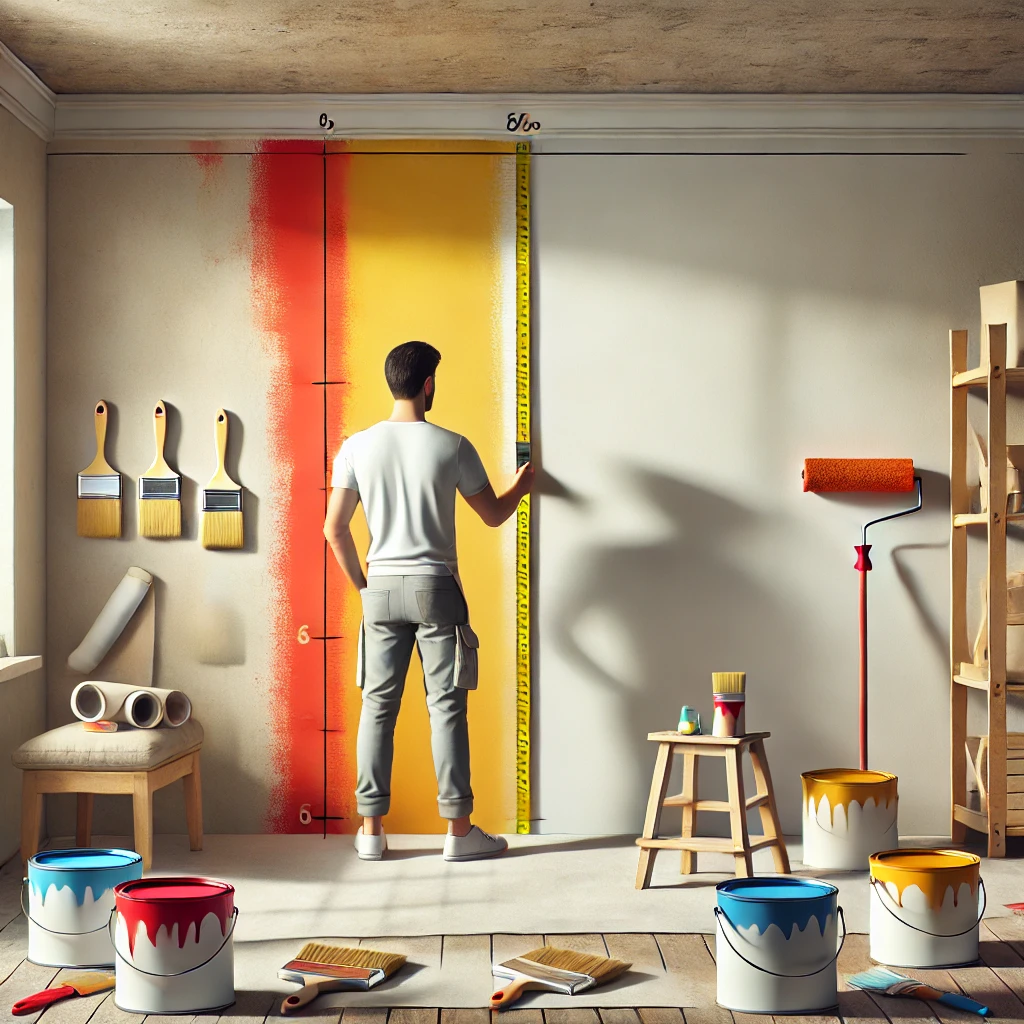Introduction

Estimating the correct amount of paint for a project is crucial to avoid both waste and running short mid-project. Whether it’s a home makeover or a large-scale building project, calculating paint quantity accurately can save time, money, and effort!
In this guide, we’ll walk you through an easy-to-follow process to estimate how much paint you’ll need for a professional result. Plus, we’ll give some tips on choosing high-quality paints, like those from Al-Babello Trading Company, to ensure long-lasting finishes.
Why Accurate Paint Calculation Matters
Accurately calculating paint quantity ensures your project stays on budget and meets your quality expectations. Buying too much paint increases costs unnecessarily, while too little can cause delays, as you’ll need additional time to purchase more.
This also affects the appearance and durability of your work—uneven patches or mismatched colors from different paint batches can make a project look unprofessional.
Key Benefits of Accurate Paint Calculation:
- Cost Efficiency: Buying just the right amount prevents overspending and helps allocate your budget to other essential materials.
- Project Timeline: Running out of paint can stall a project. With precise calculations, you’ll avoid downtime waiting for additional supplies.
- Professional Finish: Consistency matters in paintwork. When you have enough paint, it’s easier to achieve an even color application.
- Environmental Impact: Excess paint can go to waste, which is not eco-friendly. Calculating your paint quantity minimizes waste, benefiting both your budget and the planet.
By planning ahead and accurately estimating paint needs, you’re setting up for a seamless, efficient, and aesthetically pleasing result that maximizes your resources.
Step-By-Step Guide To Calculate Paint Quantity
To calculate the paint quantity accurately, follow this simple step-by-step guide:
1. Measure Surface Area:
- Start by measuring the height and width of each wall or surface. For standard rectangular walls, use the formula:
Square Footage=Height×Width\text{Square Footage} = \text{Height} \times \text{Width}Square Footage=Height×Width
2. Determine Paint Coverage:
- Most paints cover about 350-400 square feet per gallon. Check the label of your chosen paint for specific details, as this can vary.
- Example: If your walls are 1000 sq. ft. and each gallon covers 400 sq. ft., you’ll need about 2.5 gallons of paint per coat.
3. Factor In Coats:
- For most surfaces, two coats are ideal to achieve an even, durable finish. Multiply your base quantity by 2 for two coats.
- For highly absorbent surfaces like drywall or wood, consider an additional coat for optimal coverage.
4. Add a Buffer:
- Adding 10% to your calculated quantity accounts for touch-ups, errors, or future maintenance.
Example Calculation Table
| Surface Area (sq. ft.) | Paint Coverage per Gallon | Coats | Total Gallons Needed |
| 1000 | 400 | 2 | 5 |
Special Considerations for Different Surfaces
Different surfaces absorb paint differently, impacting the total quantity required. Consider the following factors:
- Interior vs. Exterior: Exterior surfaces generally require more paint due to weather exposure.
- Surface Types: Porous surfaces (like drywall) will absorb more paint, while smooth surfaces require less.
- High-Traffic Areas: For spaces like hallways, kitchens, or bathrooms, consider a more durable paint type or additional coating for added longevity.
Using these considerations, you can adjust your estimate to ensure you don’t encounter unexpected coverage issues.
Tools to Simplify Paint Calculation
You can calculate paint requirements using both manual and digital tools:
- Online Calculators: Many websites offer paint calculators where you input room dimensions, surface type, and desired coats for an instant estimate.
- Manual Calculations: Ideal for on-the-spot estimates, using basic math formulas (as shown above) can quickly give you an approximate quantity.
- Professional Assistance: For larger projects, consult a professional for detailed estimates. This reduces the risk of underestimating, especially when multiple types of surfaces are involved.
Choosing The Right Paint For Your Project
Selecting high-quality paint is just as essential as calculating the right quantity. Here are some factors to consider:
- Types of Paint by Al-Babello: For professional results, Al-Babello offers high-quality options for different needs—whether it’s interior wall paint, exterior coatings, or specialty paints.
- Quality and Longevity: Investing in quality paint reduces maintenance and ensures a long-lasting finish.
- Color Selection Tips: Light colors can make spaces feel larger, while darker tones add coziness. Consider how lighting and room size will affect your color choice.
Conclusion
Proper paint calculation is the key to a successful project. By measuring accurately, understanding paint coverage, and factoring in the right number of coats, you’ll be well-prepared to achieve a professional result.
Visit the nearest Al-Babello branch, where we offer a variety of quality paint options to fit every project need. Get started on your next project with confidence!
FAQs On How To Calculate Paint Quantity
Q1: How do I calculate the paint required for a room with large windows and doors?
A: Subtract the areas covered by windows and doors from your total wall area before calculating.
Q2: How many coats of paint do I need?
A: Two coats are standard, but more may be needed for high-traffic areas or porous surfaces.
Q3: Do textured walls need more paint?
A: Yes, textured walls have more surface area and require extra paint for complete coverage.
Q4: How long does paint last if I buy extra?
A: Stored correctly, sealed paint can last up to 10 years, but check for signs of spoilage before use.

